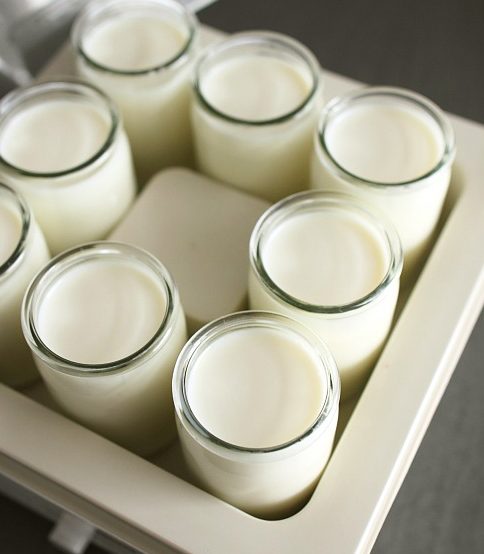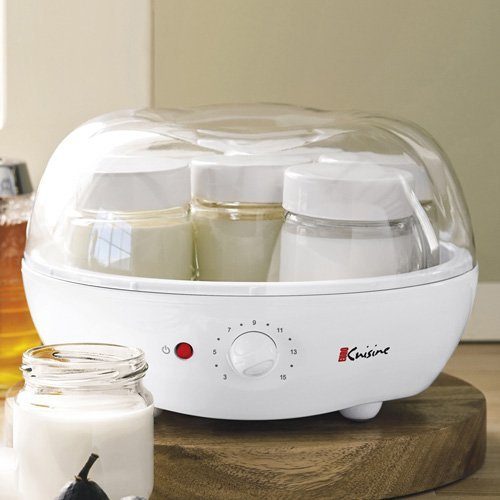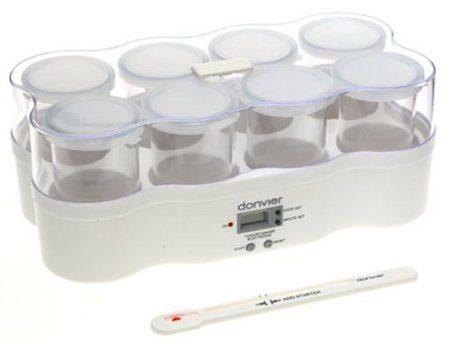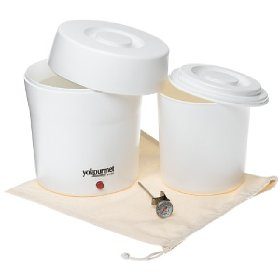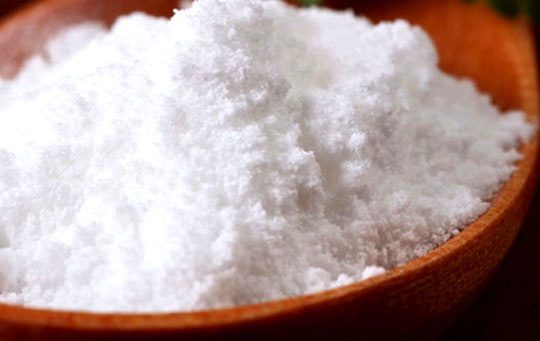How to make yogurt at home? Homemade yogurts have many benefits: no preservatives, a healthy source of calcium, they facilitate intestinal transit, and they are delicious!
So if you want to know about making your own homemade yogurt or just hesitating to get started, the following will interest you because we will cover the main principles of yogurt making, the necessary ingredients and the step by step process. You will have all the tips you need to be successful with your very first batch of yogurts!
The principles of making yogurt
I find it interesting to know how we can make homemade yogurts and howa yogurt maker works. It’s actually very straightforward.
The main principle resides in the multiplication of bacteria in milk at a certain temperature (110°F – 45°c). These bacteria are brought by lactic cultures (what we call “yogurt starters”) that will allow the thickening of milk and the characteristic acidity of yogurts.
Beyond 110°F, bacteria will die and yogurt cannot solidify. The yogurt maker allows the yogurt to reach the ideal temperature for bacteria to develop and then maintains this temperature during the 8 to 10 hours of processing. The yogurt maker works a bit like a steamer. It is therefore essential to keep the lid of the yogurt maker closed.
About yogurt makers
For more information about yogurt makers, I encourage you to read this article.Here are some basic principles:
- The yogurt maker should be placed on a stable stand, which will not suffer from hits. You should not move it during operation.
- Do not put lids on the jars during the process.
- The milk must be at room temperature. It will also work with cold milk but it will take longer to make, so it’s better to help your yogurt maker from the start. The same thing applies if you need to heat milk to incorporate an ingredient; let it cool not to kill the bacteria.
If you are looking to invest in a yogurt maker, here is a selection of trusted brand products that are very popular in many kitchens to help you make your choice:
Essential ingredients to make yogurt at home
Milk:
Whole cow’s milk, semi-skimmed, skimmed milk, goat’s milk and soy milk are ok to make yogurt. However, some vegetable milk doesn’t work: rice, hazelnut or oat milk. Note that whole milk yogurt is firmer.
Lactic acid bacteria:
The addition of lactic acid bacteria can be done in two ways. You can choose between lactic powder (cultures or starter kits) or a commercial yogurt (or from a previous batch of yours; it’s a bit like bakers do with bread when adding yeast). Yogurt starter powder can be found in pharmacies, health food shops and even grocery shops or supermarkets.
So which solution to choose? With the addition of a yogurt, yogurt as a starter are less firm and more acidic, while lactic powder brings a little more firmness and a milder flavor. However, culture starters are more expensive than yogurt. Also note that the choice of yogurt (Bulgarian, velvety, classic) will play on the final texture of your homemade yogurt.
The optional ingredients to make yogurt at home
Milk powder:
Powdered milk yogurt can be firmer. In general, homemade yogurts have a different consistency from those from grocery stores. They are more runny and creamier. Powdered milk will enable them to take more consistency.
Sugar:
Brown sugar, white sugar, honey, agave syrup, maple syrup, caramel sauce: all should do the trick. For dosing, I estimate about 1 tablespoon for a yogurt. I then multiply by the total number of pots. Feel free to taste your preparation. Think that obtained yogurt will be slightly less sweet than the preparation because bacteria will bring a bit of acidity.
Spices and herbs:
Spices have to be infused in milk beforehand: vanilla, cinnamon, star anise, ginger. Milk takes on a delicious fragrance. And why not use herbs? Yogurts can also be made savoryfor cold days!
Flavors and extracts:
There are many ready-made extracts, like vanilla and coffee flavors and with such bitter almond, orange blossom, rose water… All this dissolves well in milk and provides subtle flavors to your yogurt.
Jams and fruit:
Did you try to place a bed of jam in the bottom of your yogurt? The fruits are a little more delicate because some can make milk turn bad. Otherwise, nothing prevents you from putting in fruit compote. Forget the citrus juice as it spoils milk. By contrast, you can infuse the citrus zest in hot milk; it’s delicious.
Basic Yogurt Recipe
By following this recipe, you’ll be able to make your own yogurts at home and vary ingredients as you want.
For eight pots (1 liter of yogurt total):
- 2 pints (1 liter) of milk at room temperature
- 1 pack of yogurt starter culture or a yogurt
The night before
1. Pour the milk into a bowl.
2. With yogurt starter: Add the yogurt into the milk and whisk.
2 (bis) – With a lactic starter: Pour slowly while whisking. It is necessary that the ferments are evenly mixed in the preparation.
3. Pour into glass jars with a funnel and a ladle.
4. Close the yogurt maker and turn the power on.
The next morning
5. When the yogurt maker has finished its work (check times from your user manual), close your pots and leave them for at least 2 hours (12 is best) in the refrigerator so they firm up. Enjoy!
What are your favorite yogurt recipes? What ingredient would you try in your next homemade yogurts?

